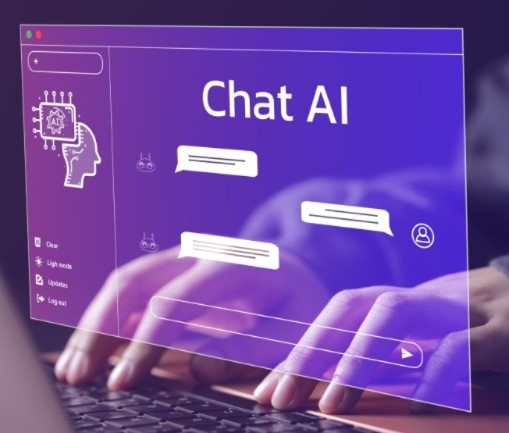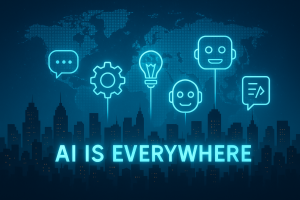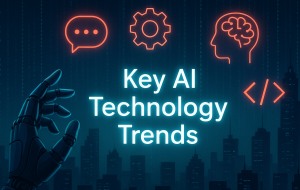🤖 AI Chat: Revolutionizing Communication in the Digital Age

🤖 AI Chat: Revolutionizing Communication in the Digital Age
Artificial Intelligence (AI) has made tremendous strides in the past few years, but one of its most relatable and widely-used forms is AI Chat. From virtual assistants like Siri and Alexa to advanced conversational models like ChatGPT, AI chat systems are transforming how we interact with technology — and each other.
This article explores what AI chat is, how it works, where it’s used, and what the future holds for this exciting innovation.
💬 What is AI Chat?
AI Chat refers to automated conversation systems powered by artificial intelligence. These systems can understand text or voice input and respond with human-like messages. Unlike traditional chatbots, which followed simple rule-based logic, modern AI chat tools leverage natural language processing (NLP) and machine learning to understand context, intent, tone, and nuance.
They are capable of:
-
Answering questions
-
Holding full conversations
-
Assisting with tasks
-
Offering personalized recommendations
-
Learning from interaction over time
In short, AI Chat is not just about giving answers — it’s about creating meaningful dialogue.

🧠 How AI Chat Works
At the core of AI chat systems lies a combination of key technologies:
1. Natural Language Processing (NLP)
NLP allows AI to read, understand, and respond to human language. It breaks down grammar, syntax, sentiment, and context.
2. Machine Learning (ML)
With ML, AI can improve its responses based on previous conversations and user feedback, making it more accurate and adaptive over time.
3. Large Language Models (LLMs)
Advanced models like OpenAI’s GPT, Google’s Bard, or Meta’s LLaMA are trained on massive datasets. This enables them to respond in ways that are contextually aware and grammatically correct — often indistinguishable from human responses.
4. Conversational Memory
Some AI chat tools include memory features that allow the AI to remember user preferences or previous topics, making the experience more personalized and fluid.
🌍 Real-World Applications of AI Chat
AI Chat systems are now integrated across industries and everyday tools. Here are some key use cases:
🛍️ E-commerce & Customer Support
-
24/7 support through AI chatbots on websites
-
Handling FAQs, returns, and order tracking
-
Reducing workload on human agents
🏥 Healthcare
-
AI chat for symptom checkers
-
Appointment scheduling and reminders
-
Mental health support via empathetic chatbots
🎓 Education
-
Virtual tutors or writing assistants
-
AI chat systems that help students with homework
-
Real-time feedback and explanations
🧑💼 Business & Productivity
-
Internal knowledge base chats (e.g., ChatGPT for Teams)
-
Automating repetitive communications
-
Summarizing meetings, writing emails, or generating reports
🧑🎨 Creativity & Content
-
Brainstorming ideas
-
Writing blogs, social media posts, and scripts
-
Conversational assistance in creating art or code
🚀 Benefits of AI Chat
-
Instant Response Time
No more waiting in queues — AI answers within seconds. -
Scalability
One AI can handle thousands of conversations simultaneously. -
Cost-Effective
Reduces the need for large customer support teams. -
Always Available
Operates 24/7 without fatigue or human error. -
Personalized Experience
Learns from users and tailors responses accordingly. -
Multilingual Support
Can translate and converse in multiple languages, expanding global reach.
🧩 Challenges and Limitations
While AI Chat offers many advantages, it’s not perfect:
-
Context Limitations
AI may misunderstand complex or ambiguous requests. -
Bias & Inaccuracy
Language models can reflect bias from training data or provide incorrect information. -
Security & Privacy
Sensitive data needs to be handled carefully. AI chat systems must comply with data protection laws. -
Emotional Intelligence
While AI can simulate empathy, it still lacks real emotional understanding and ethical judgment.
🔮 The Future of AI Chat
As AI advances, so will the capabilities of chat systems. Some expected developments include:
1. Hyper-Personalization
AI will learn and adapt even more deeply to user behavior, preferences, and goals — creating nearly human-like personal assistants.
2. Voice + Chat Integration
With advancements in voice AI, users will seamlessly switch between chatting and talking to AI across platforms and devices.
3. Emotional Intelligence
Future models may better recognize and respond to emotions, leading to more empathetic and supportive experiences — especially in mental health and education.
4. Human-AI Collaboration
Rather than replacing humans, AI chat systems will become co-pilots, assisting in complex decision-making, creativity, and communication tasks.
🌐 Popular AI Chat Tools in 2025
-
ChatGPT – OpenAI’s powerful conversational model, available via web, apps, and API
-
Google Gemini – Integrated with Google Search and Workspace
-
Microsoft Copilot – Embedded into Office apps like Word, Excel, and Teams
-
Claude – Anthropic’s AI with a focus on safety and reasoning
-
Pi.ai – A more personal, chat-based AI for everyday conversations
✅ Tips for Using AI Chat Effectively
-
Be clear and specific. Vague prompts give vague answers.
-
Give feedback. Many systems learn from corrections.
-
Use follow-ups. Build on previous responses to get richer results.
-
Know its limits. Verify important facts and avoid sharing personal data.
📝 Conclusion
AI Chat is no longer science fiction — it’s a core part of how we live, work, and connect. From businesses to classrooms, from daily tasks to creative projects, AI chat systems are empowering people like never before.
As technology continues to evolve, those who learn how to work with AI chat will not only save time — they’ll gain a major edge in creativity, communication, and innovation. The future of conversation is already here — and it’s smart, fast, and AI-powered.



